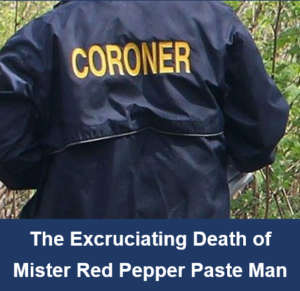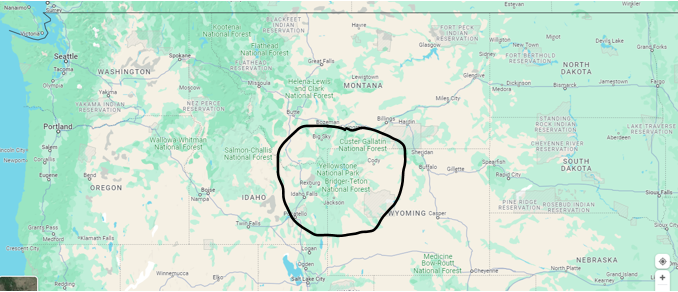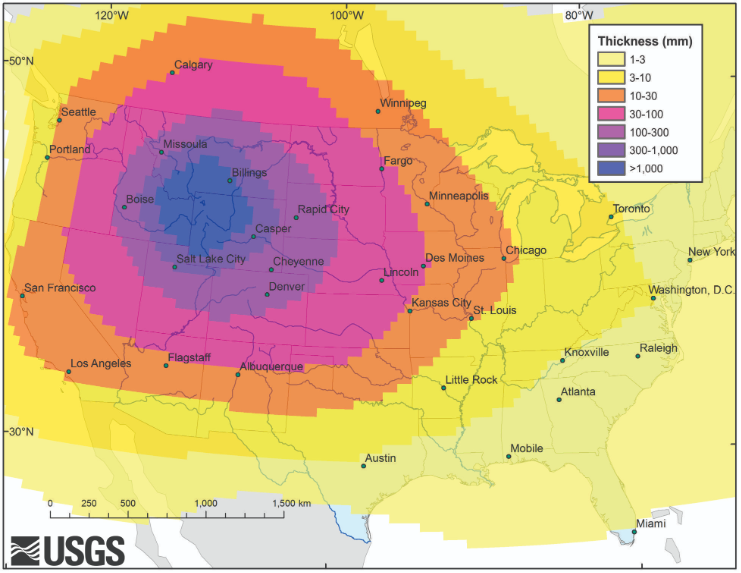 Every January 1st, many folks reflect on the year gone by, and they plan for the year ahead. Part is goal setting, done through formats that work best for themselves. But some overlook their definite purpose—not clearly stating what they want to achieve. They set goals or list steps towards an undefined end. And what nearly everyone fails to set is luck. That’s making their purpose, goals, and steps align with seemingly random-chance forces of luck.
Every January 1st, many folks reflect on the year gone by, and they plan for the year ahead. Part is goal setting, done through formats that work best for themselves. But some overlook their definite purpose—not clearly stating what they want to achieve. They set goals or list steps towards an undefined end. And what nearly everyone fails to set is luck. That’s making their purpose, goals, and steps align with seemingly random-chance forces of luck.
Happy New Year from the team of one at DyingWords. 2023 was productive, and I ticked off goals or steps in building my definite purpose. With luck, that’s completing a 26-episode streaming series titled City Of Danger. You can preview it here.
I also maintained a bi-weekly blog schedule, now entering its 12th year. Additionally, I appeared as a resource on 11 shows. Some were on-camera, and some were on-air with a few big hitters like Investigation Discovery, CBS, and NPR. I also found space to publish a new craft book on writing with Artificial Intelligence (AI) and to rewrite/republish an older work called Interconnect—Finding Your Place, Purpose, and Meaning in the Universe. You can download Interconnect for free here.
For 2024, I’m saying “No” to most opportunities and focussing almost entirely on City Of Danger which is using AI production. In this venture, “learning curve” is an understatement. I started the project in April 2021 and, with luck, the goal in this purpose is to have it done by 2025. 2026 at the latest, depending on evolution of its interactive digital, audio, and visual storytelling technology.
Enough about me. How about you? Have you stated a 2024 purpose—small or big? Have you set some goals? And do you believe you can make luck improve your good fortune? Let’s talk a bit about goals, luck, and good fortune.
What got me going on this piece was yesterday’s issue of The Morning Brew. (If you don’t subscribe to The Brew, you’re missing out. Plus, it’s free.) One section was about goal setting and how sometimes it doesn’t turn out well because people set unrealistic goals—some ridiculous—that can’t be met, and their dreams are crushed. It mentioned an NFL linebacker whose goal was to make the first-round draft pick. When he was placed in the sixth tier, his soul was destroyed, and he dropped out to become a TV announcer.
The article linked me to a guy I’ve never heard of who turns out to be a big fish in the motivational pond. His name is Sahil Bloom, and he hosts Curiosity Chronicle. I rabbit-holed his site and found one of the best slices of goal-setting pies I’ve ever devoured. The Morning Brew has a great interview with Mr. Bloom, and I’ll list the highlights.
Bloom sets his distinct objective, or definite purpose as it’s known with the Napoleon Hill crowd. He then puts out three buckets. One is the A-Bucket containing ambitious goals. One is the B-Bucket with base goals. One is the C-Bucket with low-value goals. In other terms, major goals, moderate goals, and minimum goals.
The interviewer asked Bloom about the number one mistake he sees people make when setting goals. He answered, “I see people tying their future happiness to the achievement of some goal. How many times have you assumed your lasting happiness was on the other side of some goal? A promotion? A pay raise? Another degree? How many times have you been proven wrong in this assumption?”
Bloom continues. “The Arrival Fallacy is the term I use to describe the false assumption that achieving a certain goal will create lasting happiness in our lives. It’s a When-Then psychology. When I achieve X, then I’ll be happy. The reality is that achievement is not a lasting source of happiness. Our natural wiring, or hedonic adaptation, keeps us running. We reset to the baseline and start wondering what comes next. It’s the purpose you’re after. Not the goals.”
I did some further goal research and asked my trusty AI assistant this question. “What are goals as they pertain to human personal achievement?”
It replied, “Goals in the context of personal achievement refer to specific, measurable, and time-bound objectives that individuals set for themselves to work towards self-improvement, success, or the realization of a particular aspiration. Personal goals provide a sense of direction, motivation, and purpose in various aspects of life, including career, education, health, relationships, and personal development.
Examples of personal goals might include:
- Career Goals: Achieving a specific position, completing a project, or acquiring a new skill.
- Education Goals: Obtaining a degree, acquiring a certification, or expanding knowledge in a particular field.
- Health and Fitness Goals: Losing weight, running a marathon, or adopting a healthier lifestyle.
- Relationship Goals: Building stronger connections with family and friends or improving communication in a romantic relationship.
- Personal Development Goals: Enhancing emotional intelligence, developing a growth mindset, or cultivating a new hobby.
The process of setting and working towards personal goals involves self-reflection, planning, and consistent effort. Breaking down larger goals into smaller, more manageable tasks can make the journey more achievable and help maintain motivation along the way. Regularly reviewing and adjusting goals based on progress and changing circumstances is also a key aspect of effective goal setting for personal achievement.
I drilled deeper with, “What is the most effective goal-setting system or procedure?”
It told me, “There isn’t a one-size-fits-all answer to the most effective goal-setting procedure, as individuals have different preferences, styles, and needs. However, several widely recognized frameworks and strategies can help guide the process of setting and achieving goals. One popular and effective approach is the SMART criteria, which stands for Specific, Measurable, Achievable, Relevant, and Time-Bound. Here’s a breakdown of the SMART goal-setting framework:
- Specific: Clearly define your goal. Be specific about what you want to achieve. The more precise your goal, the easier it is to create a plan of action.
- Measurable: Establish measurable criteria to track your progress. Define how you will measure your success and know when you have reached your goal.
- Achievable: Ensure that your goal is realistic and attainable. While it’s great to set ambitious objectives, make sure they are within reach given your resources and constraints.
- Relevant: Align your goal with your broader values, priorities, and long-term objectives. Ensure that the goal is meaningful and relevant to your overall vision for personal or professional growth.
- Time-Bound: Set a specific timeframe for achieving your goal. Having a deadline creates a sense of urgency and helps you stay focused on making progress.
Another valuable goal-setting model is OKR (Objectives and Key Results), commonly used in business settings but applicable to personal goals as well. OKRs involve setting clear objectives and defining key results that indicate progress toward those objectives.
Additionally, some people prefer a more holistic approach, incorporating the Wheel of Life or Life Mapping, which involves setting goals in different areas of life such as career, health, relationships, and personal development.
Regardless of the specific framework you choose, here are some general tips for effective goal setting:
- Write Down Your Goals: Putting your goals in writing helps solidify your commitment and provides a reference point for tracking progress.
- Break Down Goals: Divide larger goals into smaller, more manageable tasks. This makes the process less overwhelming and allows for incremental achievements.
- Regular Review: Periodically review your goals to assess progress and make any necessary adjustments. This ensures that your goals remain relevant and achievable.
- Stay Flexible: Be open to adapting your goals based on changing circumstances or new insights. Flexibility is key to successful goal pursuit.
Ultimately, the most effective goal-setting procedure is the one that resonates with you and aligns with your personal preferences and needs. Experiment with different approaches and adjust as necessary to find a system that works best for you.
This all made sense to me, considering it’s coming from a bot. But I wanted to expand this piece into the subject of luck. So, I returned to a human at Mr. Bloom’s website.
Here I found an informative article titled The 4 Types of Luck. It’s on what luck really is. That’s making your purpose and goals align with the seemingly random-chance forces of luck and making luck work towards your advantage.
First, Mr. Bloom evoked the Oxford Languages English dictionary. It said this:
“Luck is success or failure apparently brought on by chance rather than through one’s own actions. Chance happenings beyond a person’s control.”
The 4 Types of Luck
In 1978, a neurologist named Dr. James Austin published a book titled Chase, Chance, & Creativity: The Lucky Art of Novelty. In it, Dr. Austin proposed there are four types of luck:
- I. Blind Luck
- II. Luck from Motion
- III. Luck from Awareness
- IV. Luck from Uniqueness
Here’s how to think about each type.
Type I: Blind Luck
“The good luck that occurs is completely accidental. It is pure blind luck that comes with no effort on our part.”
Type I Luck is completely out of your control. It includes: Where you are born. Who you are born to. Base circumstances of your life. Acts of God. Type I Luck covers the truly random occurrences of the universe.
Type I Example: You win the lottery. Or, you’re out walking and a Russian satellite crashes on your head.
Type II: Luck from Motion
“Something else has been added—motion…A certain basic level of action ‘stirs up the pot’, brings in random ideas that will collide and stick together in fresh combinations, lets chance operate.”
Type II luck is a result of your motion. You’re creating motion and collisions through hustle and energy that you are inserting into an ecosystem. Type II Luck is derived through the expansion of your luck surface area from simple movement. The increase in collisions opens you up to more lucky events.
Type II Example: You start a new job and start saying yes to every opportunity that comes your way. You’re working hard, running around, meeting new people, and connecting new connections whenever possible. You connect two of the people you met through taking on these opportunities and they start a business together and make you a small advisor because you connected them. It becomes a big business and you make $1 million. Your hustle and motion created this “lucky” event.
Type III: Luck from Awareness
“Luck presents only a faint clue, the potential opportunity exists, but it will be overlooked except by that one person uniquely equipped to observe it, visualize it conceptually, and fully grasp its significance. Type III Luck involves involves a special receptivity, discernment, and intuitive grasp of significance unique to one particular recipient.”
Type III Luck is a result of your awareness and depth of understanding of a specific domain. This depth of understanding within a given arena allows you to become very good at positioning yourself for lucky breaks to benefit you.
The entrepreneur and investor Naval Ravikant summarized this type of luck beautifully: “You become very good at spotting luck.” You can “spot luck” from a mile away because of your depth of knowledge and experience.
Type III Example: You’re an entrepreneur and you see the impressive pace at which generative AI is developing for creating images and art. You had been building around the NFT profile picture craze of 2021/22 and believe that generative AI profile pictures may represent a market with similar potential. You build a generative AI profile picture app and charge people to use it, making millions. Your mind was prepared for the “lucky” opportunity given your experience set.
Type IV: Luck from Uniqueness
“Type IV Luck comes to you, unsought, because of who you are and how you behave…the links of Type IV can be drawn together and fused only by one quixotic rider cantering in on his own homemade hobby horse to intercept the problem at an odd angle… This type favors those with distinctive, if not eccentric hobbies, personal lifestyles, and motor behaviors.”
Type IV Luck occurs when your unique set of attributes attracts specific luck to you. It actually seeks you out.
Type IV Example: You’ve spent years tinkering with generative AI models (way before they were cocktail party fodder). Your unique passion and earned expertise means that you’re often called on by founders and CEOs building at the forefront of AI, and you’re able to earn equity in a variety of interesting projects that will likely return millions. Your unique and quirky hobby attracts luck to you.
The Art & Science of Luck
Typically, Type I, Type II, and Type III Luck arrives in stages:
- Type I dictates the early years of your life.
- Type II comes into play as you begin to hustle in your 20s.
- Type III sets in as you develop deep experience in your 30s and beyond.
- Type IV is more dislocated from age dependency.
To help remember this framework, here’s an infographic you can reference in the future.
Okay, enough plagiarizing from Mr. Bloom. (However, if you’d like to further explore his content, here’s the link to his site Curiosity Chronicle. And please sign his mailing list—his goal is to have 1 million followers by the end of 2024. Now, back to my trusty AI friend who I asked, “What is luck?”
It replied, “Luck is a concept that refers to the unpredictable and uncontrollable force or chance that influences events and outcomes in one’s life. It is often perceived as a mysterious and arbitrary force that can bring about positive or negative results without any apparent connection to personal effort, skill, or merit.
Luck is subjective and can be interpreted differently by individuals based on their beliefs, experiences, and cultural backgrounds. Some people attribute certain events to luck, seeing it as a factor beyond their control, while others may view outcomes as the result of their own actions and choices.
In many cultures, luck is often associated with superstitions, symbols, and rituals. People may engage in behaviors or use objects they believe bring good luck while avoiding those associated with bad luck. Additionally, the concept of luck is frequently used in casual conversation to explain unexpected successes or failures.
It’s important to note that the perception of luck is subjective, and various factors, including individual perspectives, cultural influences, and cognitive biases, contribute to how people understand and interpret the role of luck in their lives.
I asked, “How can a person improve their luck?”
It replied, “While luck is often considered unpredictable and beyond one’s control, there are certain attitudes and behaviors that individuals can adopt to potentially increase their chances of positive outcomes. Keep in mind that these suggestions do not guarantee luck but may contribute to creating opportunities and fostering a positive mindset:
Positive Attitude: Cultivate a positive mindset and outlook on life. Positive thinking can help you approach challenges with resilience and creativity, increasing your ability to recognize and seize opportunities.
Preparation and Hard Work: The saying “luck favors the prepared” suggests that being well-prepared and putting in effort can create circumstances that may lead to positive outcomes. Work hard, stay dedicated to your goals, and be persistent.
Openness to Opportunities: Be open to new experiences and opportunities. Sometimes luck comes from unexpected sources, and being receptive to change can increase your chances of stumbling upon fortunate situations.
Networking: Building a strong network of connections can provide access to valuable information and opportunities. Engage with people in your field, attend events, and be open to collaborations.
Continuous Learning: Stay curious and committed to learning. Acquiring new skills and knowledge can broaden your perspectives and make you more adaptable to different situations.
Risk-Taking: Taking calculated risks can lead to potential rewards. Evaluate risks carefully and be willing to step out of your comfort zone when the situation warrants it.
Resilience: Developing resilience can help you bounce back from setbacks and adapt to changes. The ability to persevere through challenges is often seen as a factor in long-term success.
Mindfulness and Intuition: Pay attention to your intuition and practice mindfulness. Being aware of your surroundings and trusting your instincts can sometimes guide you toward favorable decisions.
Helping Others: Acts of kindness and helping others can create a positive ripple effect. Building good relationships and being supportive can lead to reciprocity and unexpected opportunities.
Adaptability: Stay flexible and adaptable in the face of change. Being able to adjust to different circumstances can help you navigate challenges and take advantage of unforeseen opportunities.
While these suggestions may contribute to a more positive and proactive approach to life, it’s essential to acknowledge that luck is not entirely within one’s control. External factors, chance, and circumstances also play a significant role in shaping outcomes.
My thanks to internet resources The Morning Brew, Sahil Bloom of Curiosity Chronicle, and my trusty assistant ChatGPT. My takeaway from goals and luck? Have a purpose, put it out to the ether, have faith, process what comes back, and persist towards that purpose. By increasing your exposure—your purpose—you’re setting your luck.
So set your luck, not your goals, and have good fortune in 2024!
























